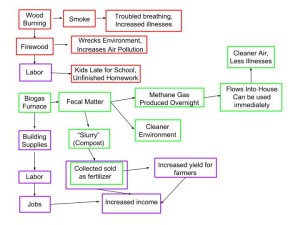Describe the biodiversity of your hometown in 150-250 words.
Like many other posts we have done I think a good place to start is in your hometown. Having lived in Rochester, PA since I was two years old I am very familiar with the amount of biodiversity in the town, or lack thereof. Covering a land area of approximately five square miles, Rochester does not scream biodiversity. Not much of those five square miles is even wooded areas, I could not find any numbers, but from what I know I would estimate that approximately 1.3 square miles are wooded. Furthermore, there is no farmland in Rochester. If you go to the neighboring towns of Freedom, New Sewickley, even New Brighton, you will be in a much more biodiverse area with farmland and wooded area. The human population of Rochester has steadily been declining since the 1930’s. It is predominantly urban area that was built up in the 1900’s to accommodate the larger population; human population definitely had an impact on the biodiversity in the area.
Describe the biodiversity of your college campus.
Penn State Behrend for those of you who may not know is an arboretum. For those who do not know what an arboretum is, it is defined by the Merriam-Webster Dictionary as a place where trees and plants are grown in order to be seen or studied by the public.[1] Every tree on campus has a little placard planted at the trunk of it telling you the name and species of the tree. On the reverse side of the campus maps all around campus you will find a satellite image of the campus with all of the different trees numbered and their name and species listed at the bottom. There are more than 200 different species of trees on campus for the students to observe and enjoy.[2] Also, located on the western side of the campus is the Wintergreen Gorge. The Wintergreen Gorge is a densely wooded area with a shallow stream running through it. There are numerous amounts of different trees and plants in the Gorge, it is a great place for students to take a break from their studies and enjoy a nice hike when the weather is nice.
Compare the two entries.
While Rochester is a small town in the center of Beaver County, Penn State Behrend is a not necessarily a town of it’s own. The buildings are more spread out, allowing greater usage of the land between them for things such as plants and trees to grow. The campus is in full swing for nine months of the year, but the increased population during those nine months does not have an affect on the ecosystem. The more urban nature of Rochester gives the ecosystem little to no chance of increasing biodiversity. A potential way to begin increasing the biodiversity in Rochester would be to start tearing down abandoned buildings, then planting trees or other plants in their place. This would not be a cheap task however and the population may not be able to afford the increase in taxes to make it happen.
[1]http://www.merriam-webster.com/dictionary/arboretum
[2]https://psbehrend.psu.edu/about-the-college/the-arboretum-at-penn-state-behrend



